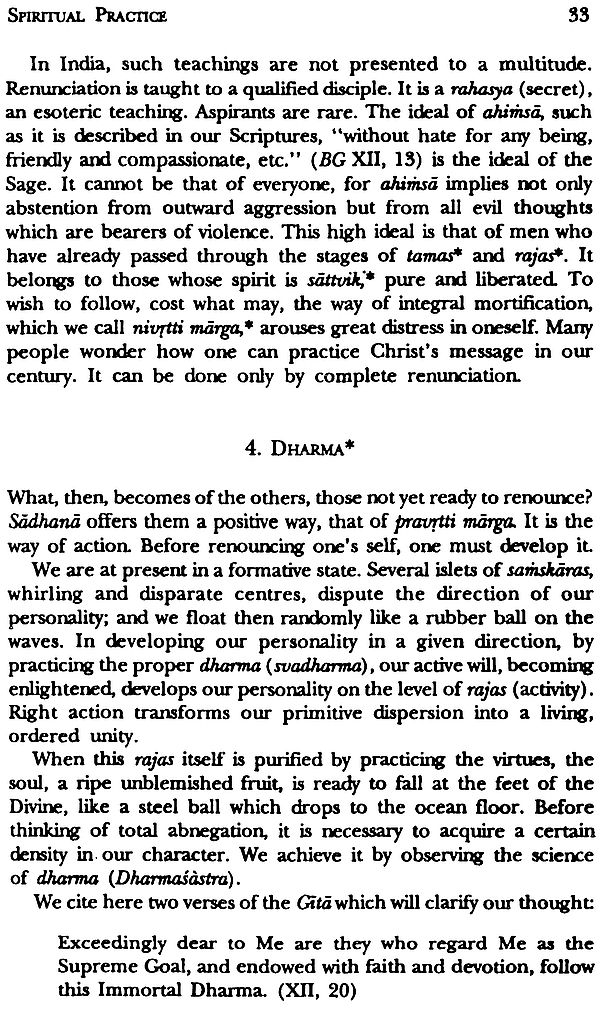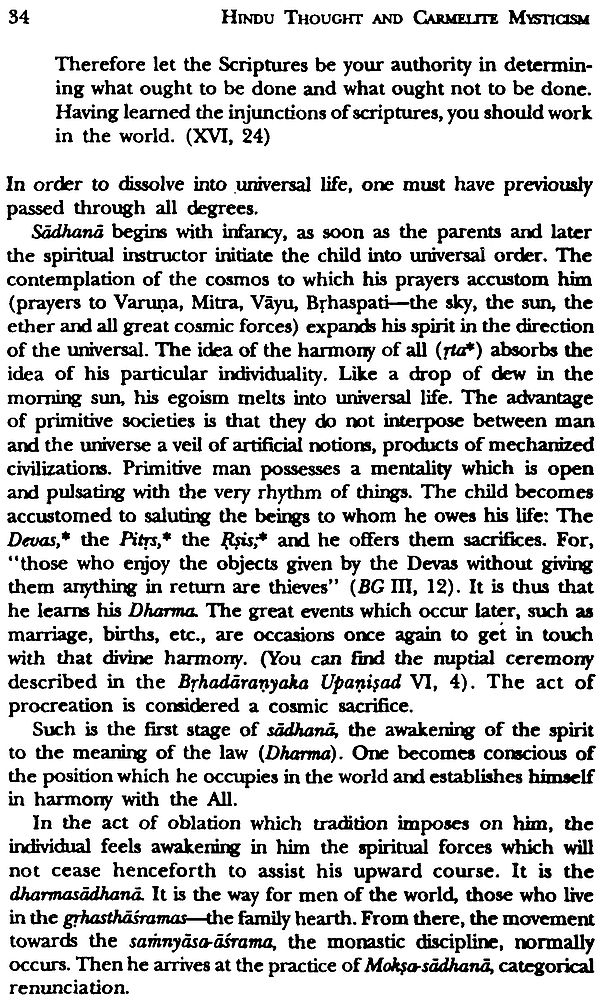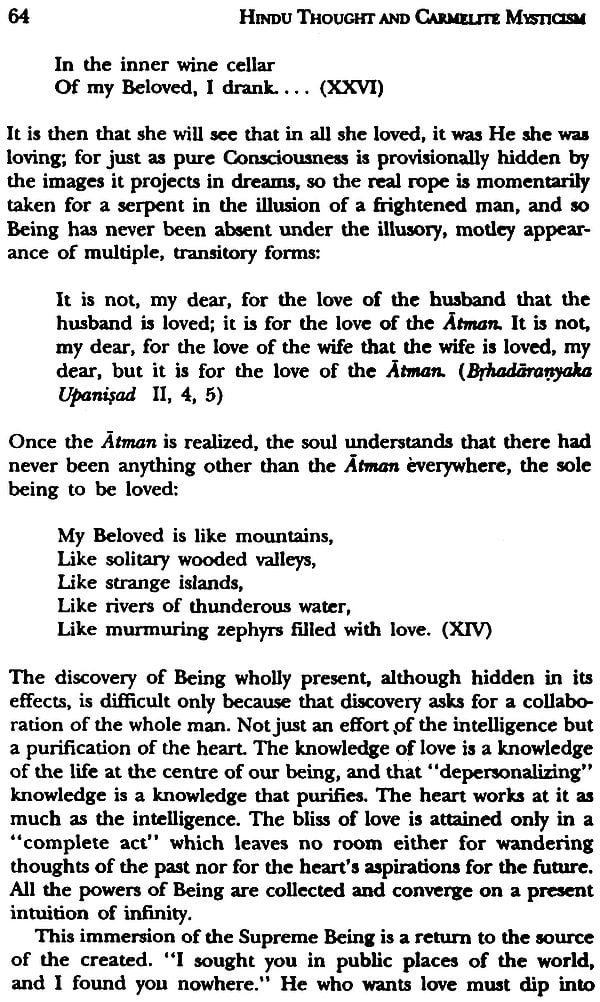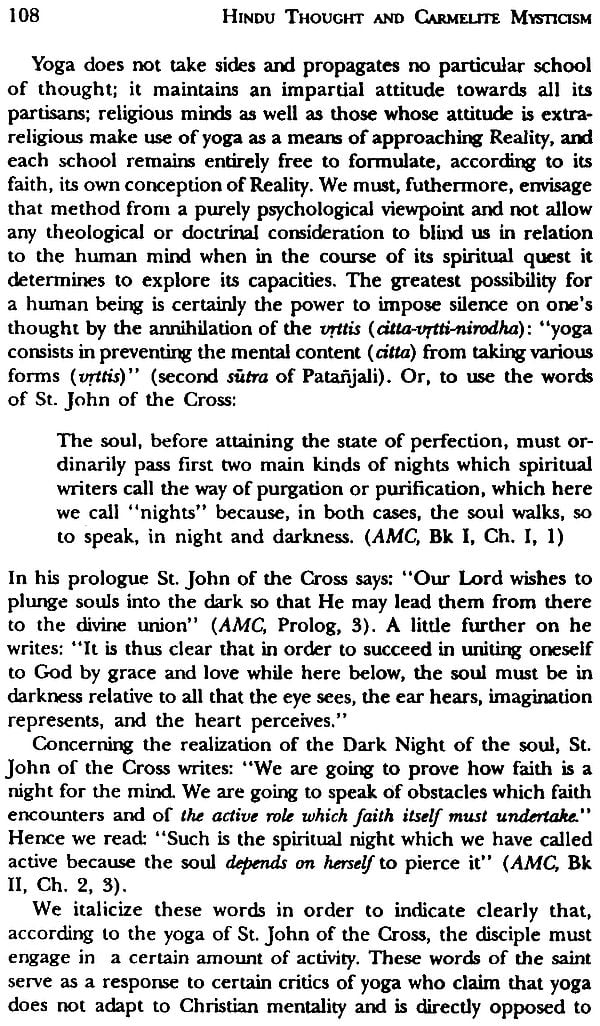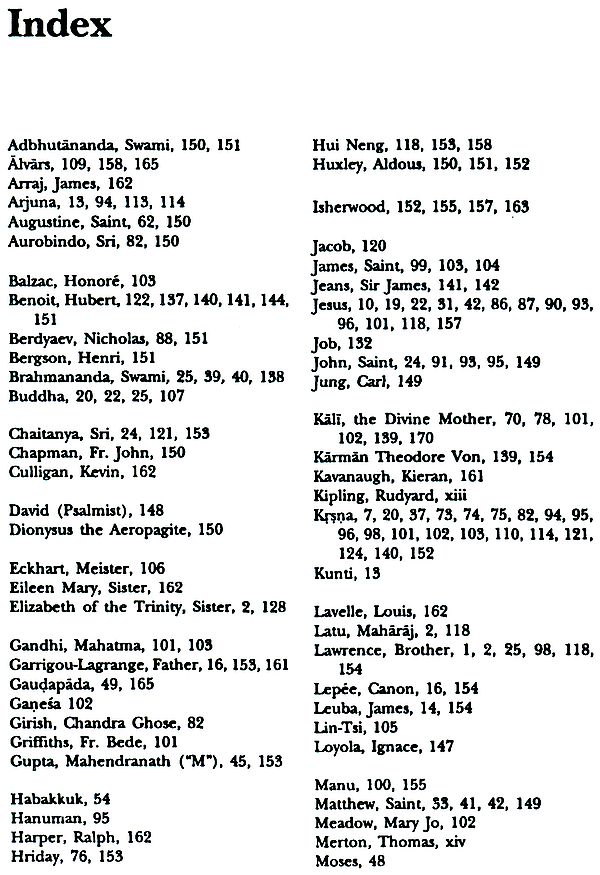
Hindu Thought and Carmelite Mysticism
Book Specification
| Item Code: | IDD376 |
| Author: | Swami Siddheswarananda |
| Publisher: | Motilal Banarsidass Publishers Pvt. Ltd. |
| Language: | English |
| Edition: | 1998 |
| ISBN: | 8120815106 |
| Pages: | 187 |
| Cover: | Hardcover |
| Other Details | 8.9" x 5.9" |
| Weight | 290 gm |
Book Description
From the Jacket
This study in comparative mysticism (originally given as lectures at the Sorbonne) explores the relationship between Hindu mystics (notably Shankara and Sri Ramakrishna) and Christian Carmelite mystics (notable St. John of the Cross), using jnana, bhakti, and raja yogas as a basis for comparison as well as the sacred scriptures of both traditions.
About the Author
Swami Siddheswarananda (1897-1957) was a prince of the House of Cochin who after serving the Order of Ramakrishna many years in India, was sent to France in 1937 to found a Vedanta Centre near Paris. He was well known in France as an author and lecture.
William Buchanan is a retired Professor of Humanities now living at the Vivekananda Monastery and Retreat in Ganges, Michigan, U.S.A.
In 1889 the English poet Rudyard Kipling could write, “East is East and West is West and never the twain shall meet.” I rather doubt that he would write that line today.
We are increasingly aware that the world is an interdependent reality-and a mysteriously interdependent reality. Symptomatic of the change, and well before, let us say, American had discovered the Toyota, was the presence of a Bead Griffiths in the East and a Swami Siddheswarananda in the West. “Nothing human is alien,” wrote the ancient Terrence, and our corollary might well be “Nothing divine is alien.” Nothing truly divine.
William Buchanan and Motilal Banarsidass Publishers have themselves made a signal contribution to the emerging spiritual universe by making Swami Siddheswarananda’s exemplary book accessible to an English-speaking audience, something for which I have long hoped. I first chanced to encounter his Pensee Indienne et Mystique Cormelitaine (1974) in the course of research into “the Mystical Doctor,” St. John of the cross (1542-91) at the Bibliotheque Nationale, Paris, some years ago. Immediately I found myself charmed by the work, an unusual blend of insight and solidity. Here was no ingenuous tract ecstasizing over the latest avatar but an equally engaging work of real discernment. Here, then, was evidence that nothing truly divine is alien.
My own special interest among the Carmelites of golden age Spain is John of the Cross, collaborator with St. Teresa of Avila, mystic extraordinary and master of prayer, in the stormy spiritual and moral reform of their community. St. John of the cross of himself among the most universal of mystics. His poetry, for example, has been compared to that of Rumi. There has already been interest in his peculiar affinities with Zen Buddhism. Therefore, Thomas Merton, probably John’s foremost disciple in our century, could affirm: “Frankly, I would say that Zen is nothing but John of the Cross without the Christian vocabulary.”
The Swami, master of Vedanta is an acute interpreter of the Mystical Doctor. He brings out, and brings out for the first time as far as I know, how John can be holomorphic, to enlist the phrase of Raimundo Panikkar, with Indian religious thought. John, he greets even as “the Patanjali of the Occident.” Indeed, the Mystical Doctor is seen as an embodiment of Raja-yoga, a synthesis of Jnana-Bhakti and Karma-yoga. And John’s spirituality is indeed all these things, an all but indistinguishable mixture of gnosis, agape and, despite his personal preference, active service. It goes without saying that the Carmelite has no doctrine of, say, the cakras, but he does have, I believe, some essential correspondences. For example, his radical disciplining of the sense is to open the renunciant to liberation and awakening. Moreover, contrary to a rather modern aberration of the cult of pure experience – if indeed, there can be such a thing- faith is essential. But this faith is a prefiguring of wisdom.
What the Swami has given us is fact a contribution to wisdom literature, and the flowering of a wisdom literature around the world is corroborative that nothing divine is alien. At the same time, siddheswarananda is no partisan of some myself mélange. While he illuminates the common ground of two great spiritual traditions, he is loathe to dissolve facilely the historic differences. And so while he can affirm that Ramakrishna had an experience of Christ, he demurs from claims that this is a specifically Christian experience. Again, he does not homogenize John and Shankara, though I would venture that John issues, ultimately, in a Christian equivalent of Advaita. In The Living Flame of Love, for example, the Mystical Doctor mysteriously ones even “fire” and ‘water”.
Siddeswarananda suggests to me how world spirituality can be not only interdependent, but mutually elucidatory. May the light not shine through his book to a large international audience.
| Translator's Note | vii | |
| Biographical Note on Swami Siddheswarananda | ix | |
| Letter of Appreciation | xi | |
| Preface | xiii | |
| Abbreviation Used | xv | |
| I. | Hindu Thought and Carmelite Spirituality | 1 |
| 1 | Prayer of the Discipline of Purification | |
| 2 | Suffering | |
| 3 | Union with God | |
| II. | Spiritual Practice | 21 |
| 1 | Askesis and Sadhana | |
| 2 | Love | |
| 3 | Revelation | |
| 4 | Dharma | |
| III. | The Study of Yoga in St. John of the Cross | 39 |
| 1 | Preliminary Considerations Concerning Spiritual Studies | |
| 2 | Aspects of Jnana-Yoga in St. John of the Cross | |
| IV. | Bhakti-Yoga and St. John of the Cross | 61 |
| V. | The Yoga of St. John of the Cross and the Theological Roots of Faith | 83 |
| VI. | The Raja-Yoga of St. John of the Cross | 107 |
| 1 | Parallels | |
| 2 | Contemplation and Christian Faith | |
| 3 | Meditation and the Guru | |
| 4 | The Dark Night of the Soul | |
| 5 | Ista and Infused Contemplation | |
| 6 | Integral Yoga | |
| 7 | Conclusion | |
| Notes of Persons and Books | 121 | |
| Bibliographical Notes by the Translator | 161 | |
| Glossary of Sanskrit Terms | 165 | |
| Index | 171 |
